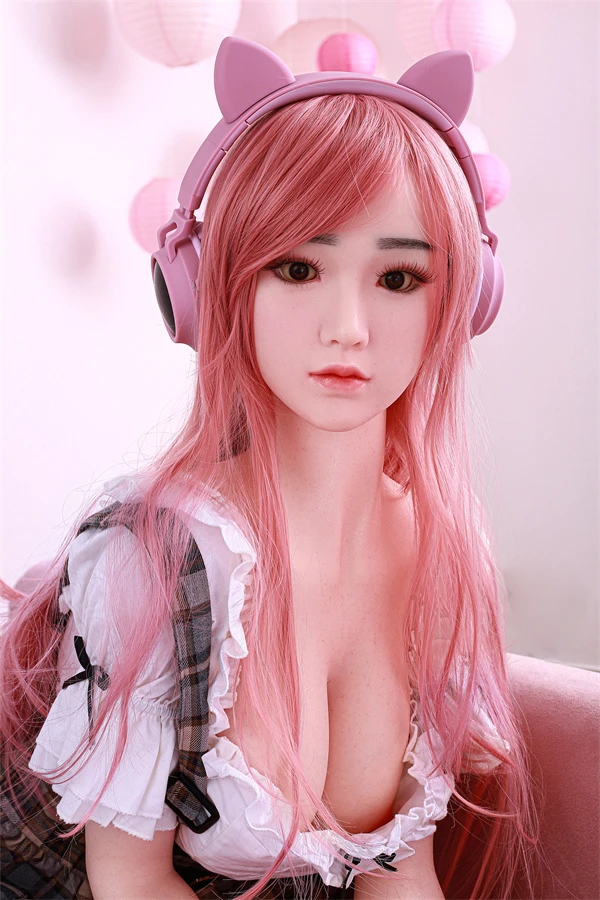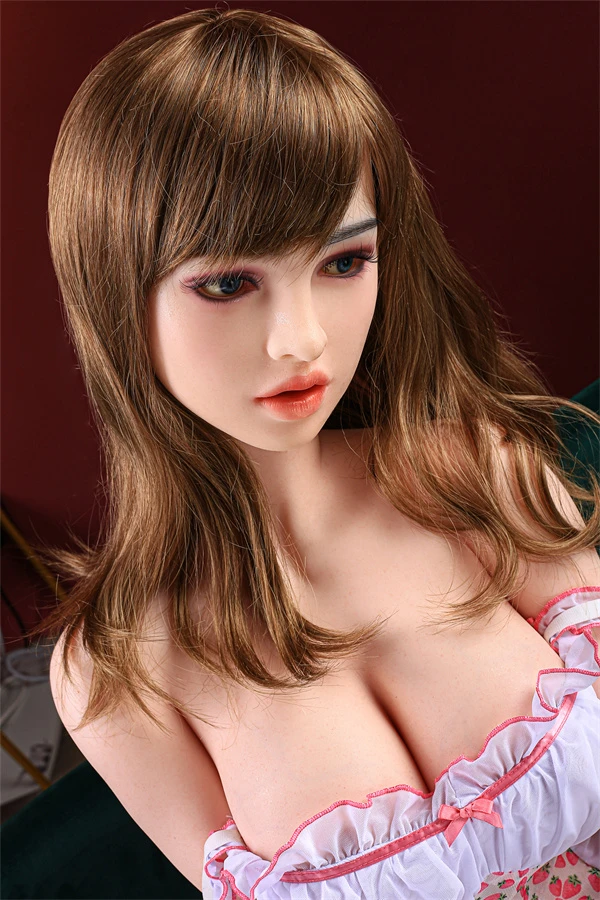The Hook – “Stop Guessing, Start Choosing”
Let’s be honest: picking your first doll is overwhelming. You are staring at a dozen brands, two core materials, and price tags that feel like a mortgage payment. You are drowning in information, but inside you are fighting doubt, embarrassment, and the fear of a $2,000 mistake. As The Doll Advisor, with more than a decade of hands-on experience, my job is to eliminate that anxiety and give you a personalized decision framework.
This is not yet another “TPE vs. Silicone” blog post. It is a step-by-step process designed to ensure the doll you choose actually fits your life, lifestyle, and expectations the first time. Stop guessing. Let’s start choosing.
The 3 “Big Questions” Framework
A perfect doll is 90% about lifestyle compatibility. Before obsessing over specs, answer these three questions with total honesty.
Question 1: What Is My “Primary Goal”?
Your true motivation filters out 70% of the noise immediately.
- Goal A – The Ultimate Sexual Experience: Prioritize softness, elasticity (“jiggle”), and realistic orifices. High-grade TPE that maximizes tactile immersion usually wins here.
- Goal B – Quiet Companionship: You crave presence, warmth, and comfort. Focus on a face you connect with, a cuddly skin feel, a touch of weight for realism, and optional heating elements for warmth.
- Goal C – Art & Photography: You need a posable metal skeleton, ultra-realistic detailing, swappable heads, and makeup-friendly silicone. Visual realism and durability matter more than softness.
Question 2: What Is My “Realism Tolerance”?
- Hyper-Realism: Platinum silicone, hand-painted pores, veins, freckles. Stunning, but can trigger uncanny-valley discomfort and comes with a premium price.
- Idealized Realism: The most popular look—flawless, “perfect person” styling that balances beauty and believability.
- Anime / Fantasy Style: You want stylized elves, anime heroines, or fantasy icons. Skip the realism debate entirely and shop within specialized fantasy lines.
Question 3: What Are My “Logistical Realities”?
This is the #1 source of buyer’s remorse. Be brutally honest.
- Space: Full-size dolls require a closet, suspension stand, or private storage plan. Roommates? Studio apartment? Plan now.
- Weight: A 165 cm doll can weigh 35–45 kg (80–100+ lbs). If you cannot lift that “limp weight” into a bath and back, choose a smaller body or torso.
- Time & Maintenance: Expect 30–45 minutes to clean and dry a full-size doll after every use. TPE requires extra powdering and stain vigilance. If zero-prep spontaneity is your goal, consider a lighter, easier-to-clean option.
The “4-Dimensions” Check
Once your 3-question profile is clear, translate it into specs across four dimensions.
Dimension 1: Material (TPE vs. Silicone) – A Choice, Not a Battle
Match the material to your profile.
| Feature | TPE (Thermoplastic Elastomer) | Silicone |
|---|---|---|
| Softness / Feel | ⭐⭐⭐⭐⭐ Ultra-soft, bouncy, “jiggly” | ⭐⭐⭐ Firmer, muscle-like resilience |
| Durability | ⭐⭐⭐ Softer, more prone to tears | ⭐⭐⭐⭐⭐ Extremely durable, long-life |
| Maintenance | ⭐⭐ Porous, stains easily, requires powdering | ⭐⭐⭐⭐⭐ Non-porous, easy to sterilize |
| Stain Resistance | ⭐ Needs color-transfer vigilance | ⭐⭐⭐⭐ Highly stain resistant |
| Visual Realism | ⭐⭐⭐ Idealized finish, fewer pores | ⭐⭐⭐⭐⭐ Medical-grade detail, pores, textures |
| Average Cost | Lower—budget friendly | Higher—premium investment |
| Lube Compatibility | Water-based only (silicone lube damages TPE) | Water-based preferred (silicone lube can get sticky) |
Advisor’s shortcut: Choose TPE when experience-first softness and budget matter most. Choose silicone when hygiene, artistry, and longevity outrank cost.
Dimension 2: Body Type (Weight & Height)
Logistics vs. fantasy. A 170 cm, 45 kg doll is breathtaking but brutal to move. For 90% of first-time buyers, a 140 cm–150 cm body (25–30 kg) provides a massive boost in usability, posing, and cleaning. If space or strength is limited, explore high-quality torsos, partial bodies, or compact dolls—you can always scale up later.

Dimension 3: Realism & Features (Face, Skeleton, Tech)
- Faces & Heads: Fixed faces are simple; modular heads prevent boredom and unlock styling variety.
- Skeleton: Prioritize double-jointed shoulders, shrugging mechanisms, articulated fingers, and EVO poses if photography or realism is vital.
- Heating & Sensory Add-ons: Ideal for companionship seekers; expect extra cost and charging routines.
- AI & Smart Heads: Brands like RealBotix offer conversational AI heads. Incredible for emotional connection, but they add thousands to your build and do not impact tactile realism.
Dimension 4: Brand & Budget
- $500–$1,000: Almost always low-grade TPE. Expect chemical smell, stiff joints, and high tear risk.
- $1,500–$2,500 (Sweet Spot): Reputable TPE brands or entry-level silicone. Balanced skeletons, safer materials, better QC. This is where most satisfied first-timers land.
- $3,000+: Platinum silicone, hand-painted realism, AI modules, heating, and brand prestige. Ideal for collectors, artists, and seasoned owners.
Total Cost of Ownership: A $700 doll that tears or molds after a year costs more than a $1,800 doll that lasts a decade. Invest once; cry once.
The #1 Mistake (and How to Avoid It)
The biggest regret isn’t “wrong material.” It’s ignoring logistics—especially weight and cleaning. Real buyers report “libido-robbing preparation” for 45 kg dolls: dragging them from closets, powdering sticky limbs, dressing them, heating them, and cleaning them afterward. Many simply stop using the doll. Avoid this spiral by respecting your honest limits right now.
Your First 24 Hours: What to Expect
- Unboxing & Smell: A “new doll smell,” especially with TPE, is normal and fades with ventilation.
- First Bath (Mandatory): Use warm water plus mild, fragrance-free soap to remove factory residue. Rinse thoroughly, pat dry with a lint-free towel, never rub.
- First Powdering (TPE Only): Once fully dry, dust with unscented talc/baby powder to eliminate tackiness and protect the skin.
- Ventilate: Let the doll air in a ventilated room for a few hours to dissipate odor and humidity.
Advisor’s Quick FAQ
Is silicone always better than TPE?
No. Silicone is more durable and hygienic; TPE is softer, bouncier, and usually cheaper. Match the material to your primary goal.
How much should I spend on my first doll?
The $1,500–$2,500 range balances quality, safety, and realism. Be cautious of full-size dolls under $1,000 unless you fully accept the compromises.
What’s the hardest part of ownership?
The two W’s: weight and washing. Both demand physical effort and time every single session. Choose a size and material you can comfortably maintain.
Conclusion: Your Confident First Step
You now have a decision framework anchored in your Primary Goal, Realism Tolerance, and Logistical Reality. You know how to avoid the #1 mistake by respecting weight and maintenance, and you understand how material, body type, features, and brand tiers map to your lifestyle. You are not just buying a doll—you are investing in the right companion for you.
Call to Action
Feeling clearer? Explore our curated selection of manageable, high-quality TPE and silicone dolls, or chat with an Elovedolls advisor today to fine-tune your fit.
Author name: Eva

Eva has many years of sales and service experience in love dolls, providing you with the most professional love doll shopping guide. Our expertise has grown over time and we have a solid reputation based on the quality of our product range and our qualified customer service.




